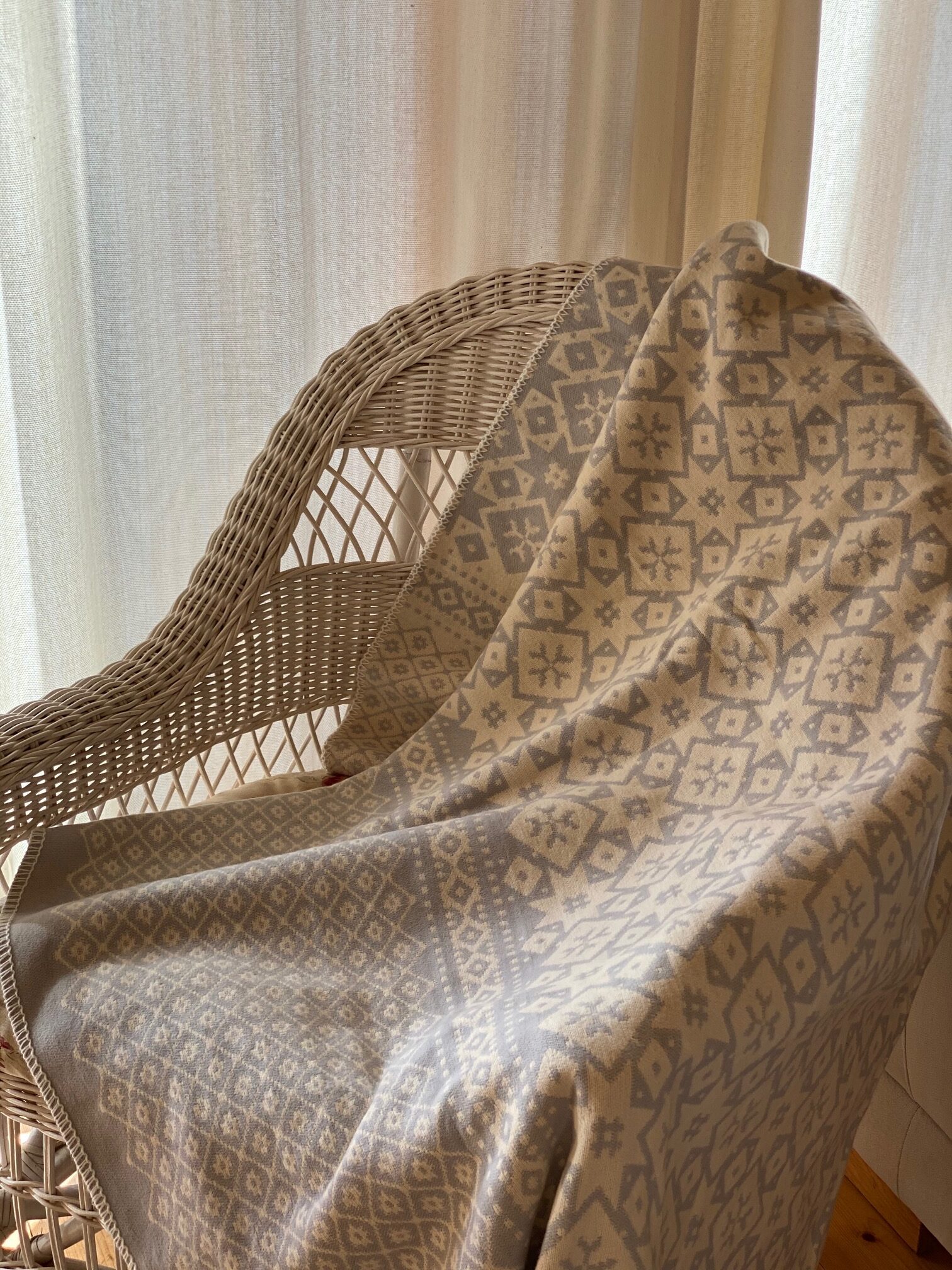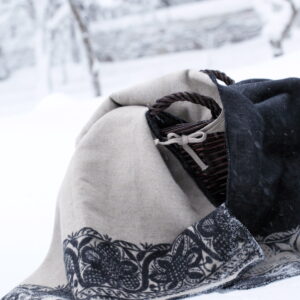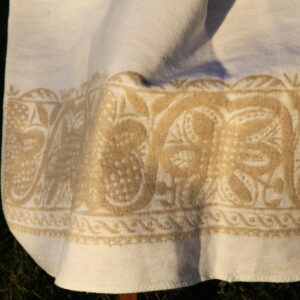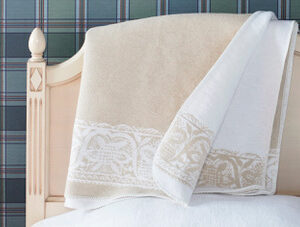140×200
The creation of Kihnu shawl was greatly influenced by the creative heritage of an honourable Estonian textile designer, Anu Raud. Kihnu glove patterns that she loved and collected, and are now woven into the Kihnu shawl, bring luck and health to the people wearing them. Kihnu is a beautiful Estonian island where people wear folk costumes – körts (skirts), shawls, trois (knitted pullovers) and kapõtas (men’s socks) – nearly daily even nowadays. The islanders honour their native customs and beliefs, and thanks to their faithfulness in holding on to them, Anu Raud has managed to preserve the colourful and richly detailed patterns and textiles. The creative heritage of this folk art collector now adorns Kihnu shawl of Ellu sallid, as well as the treasury of Heimtali Museum of Local History. The shawl’s red colour was influenced by the ancient times when Kihnu folk costumes were dyed red, using roots of bedstraw. The colour red was believed to have healing and disease-repellent effect. Irrespective of the skirt’s colour nowadays, it is still trimmed with a red ribbon, in the hope of luck, health and protection according the folk belief. The pattern of Kihnu shawl has influence from bygone times as well. The shawl is adorned with troi pattern and a mixture of different styles, very much characteristic to the island’s gloves (traditionally, different patterns are used for different parts of Kihnu gloves and mittens). Kihnu gloves have always been made from indigo blue or white and black sheep wool. All these ancient ideas have been woven into the Ellu scarf. Kihnu shawl also brings octagram and knotted square motif into this day. The islanders believe the latter to be a “witch sign”. By using the sign together with other symbols, the wearer is believed to receive strength and power. The tradition of wearing scarves and shawls has a long history in Estonia. Shawls were considered to be the most valued piece of a folk costume and it was mainly a part of festive clothing. When it was cold outside, shawl would keep you warm while going to church or visiting someone. In warmer weather, it would add festivity to your outfit, being carried on your arm. More skilfulness was needed for making a shawl than for any other piece of clothing. Therefore shawls, as well as the knowledge and skills of making them, were well-kept and passed on to next generations. Kihnu shawl is reverence to the past, as well as to the present. My acknowledgements belong to the Estonian women, men and children who, throughout the history and in one way or the other, have honoured the story of our nation and keep doing so. To quote Anu Raud, “May our handicraft be the everyday seasoning and warmth in our homes!”







